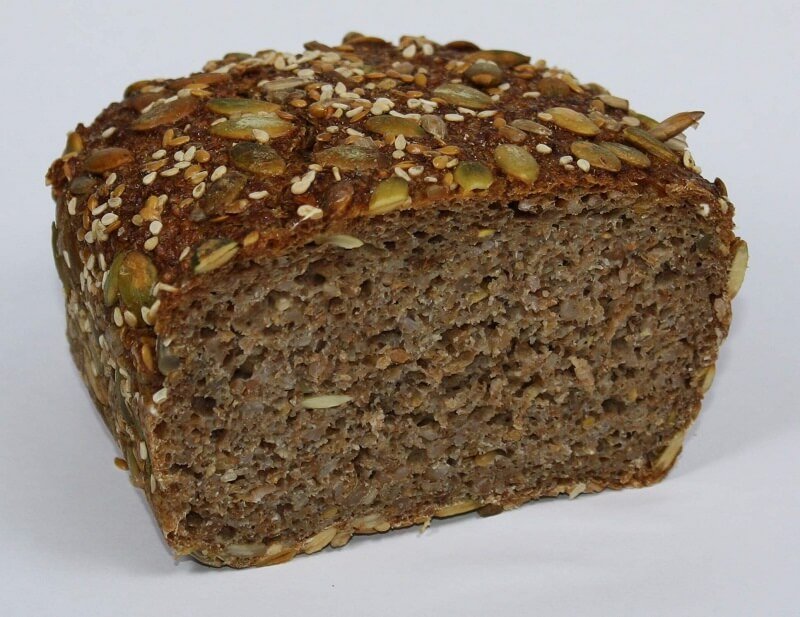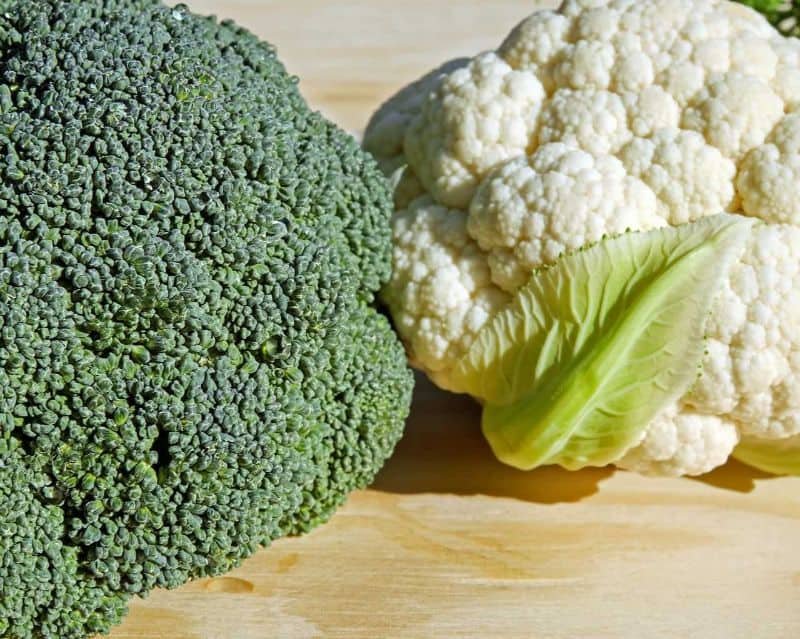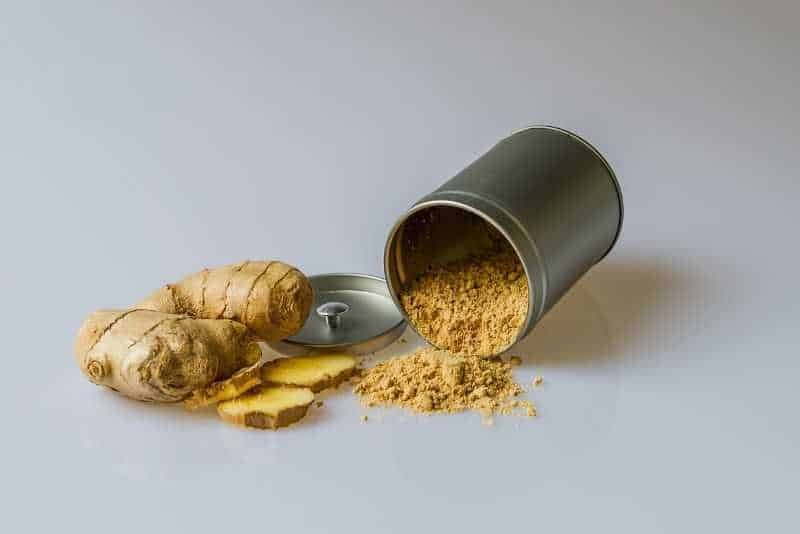What are the top 15 most powerful cancer fighting foods

What is Cancer | Foods to Avoid | Cancer Fighting Foods | Conclusion
If you or a relative of yours has been diagnosed with cancer, you are probably wondering about the best ways to fight off the disease.
Although you should always follow the instructions of your doctor, there are some foods that have been shown to be particularly effective in fighting cancer.
These cancer fighting foods can be found in any grocery store and can easily be incorporated into your diet.
Before we jump into the list of cancer fighting foods, it’s important to understand what cancer is. If you want to jump straight to the cancer fighting foods, click here.
When you sit too much every day, you disturb your body’s natural functions, slow down your metabolism, and impair blood sugar regulation. Your circulation and heart health suffer, and your muscles and bones weaken. Mentally, you face a higher risk of anxiety and depression.
To counteract these effects, incorporate standing breaks, desk exercises, or walking meetings. Short, frequent movements can make a big impact.
Small changes like these can alleviate many issues associated with prolonged sitting. Learn how simple habits can greatly enhance your overall well-being.
Prolonged Sitting Disrupts Body Functions
Sitting for long periods can mess up your body’s natural functions. It can cause problems with your metabolism, blood sugar levels, and blood flow. When you sit too much, your body’s metabolism slows down. This means you burn fewer calories, which can lead to weight gain and obesity.
Sitting also makes it harder for your muscles to use blood sugar properly. This can increase insulin resistance and raise the risk of type 2 diabetes.
Your heart health can suffer too. Blood can pool in your legs, leading to poor artery function and a higher risk of heart disease.
It can also increase your blood pressure and cholesterol levels, which are bad for your heart. Poor blood flow can cause varicose veins and, in severe cases, deep vein thrombosis (DVT).
Sitting too long affects your muscles and bones as well. Bad posture can strain your back, neck, and shoulders, causing pain and possibly leading to problems with your spinal discs. Not moving enough can also weaken your bones, raising the risk of osteoporosis.
☝️ The human body was designed to move, jump, run, and do strength activities. It is not supposed to sit all day.
Over millions of years, our bodies have evolved to be very active and capable of many physical activities, like walking, running, climbing, and lifting. Our bones, muscles, heart, and brain are all made to work best when we move and exercise.
For most of human history, people had to be active to survive. They hunted animals, gathered food, farmed, and did other hard tasks every day. Sitting still for long times is something new for humans. This change happened because of machines, technology, and how work and free time have changed.
Now, many people spend too much time sitting, whether at school, work, or home, which can be bad for our health. Regular movement and exercise are key to staying healthy and avoiding these problems.
Excessive Sitting and Mental Health Risks
Sitting too much doesn’t just hurt your body; it can also affect your mind. Spending a lot of time sitting can increase the risk of anxiety and depression. The more you sit, the higher your chances of feeling anxious or depressed.
Studies from the Semel Institute for Neuroscience and Human Behavior at the University of California Los Angeles (UCLA) show that sitting a lot can affect the brain. Through MRI scans, researchers found that the more hours people spent sitting each day, the thinner the tissue in their medial temporal lobe (MTL), which includes the hippocampus. The hippocampus is largely responsible for storing and accessing memory. This means fewer new brain cells are made, which can hurt memory over time.
Interestingly, regular exercise alone doesn’t fix the problem. Even if you exercise a lot, sitting for long periods still poses a risk. Taking short, frequent breaks can help.
Research shows that people who stand up or move around every 30 minutes have about half the risk of anxiety and depression compared to those who don’t take breaks. [1]
How To Break the Cycle: Actionable Solutions for Everyone
Whether you’re an office worker, a gamer, or a driver, breaking the cycle of prolonged sitting is vital for your health. Begin by integrating small changes such as using a standing desk.
Regular breaks to move around are also essential. Incorporating light exercises into your routine can significantly reduce the risks associated with excessive sitting.
These adjustments make a noticeable difference, promoting better overall health.
Office Workers
Office workers can break the habit of sitting all day by adding regular movement and activity into their daily routines. Start by taking short breaks every hour to stand up, stretch, or take a quick walk. Setting reminders on your computer or phone can help you remember to move.
Here are some practical tips:
- Use a standing desk: You can switch between sitting and standing, which reduces the time you spend in one position.
- Walking meetings: Instead of sitting in a conference room, walk during meetings. Walking can help you think better and stay active.
- Desk exercises: Simple exercises like leg raises, shoulder rolls, or desk push-ups can be done at your desk.
Creating a more active work environment helps your physical health and also boosts productivity and mental well-being. Employers can help by providing resources like standing desks or organizing fitness classes. Also, using fitness trackers can help you monitor your activity and meet your movement goals.
Gamers
Gamers need to move more to stay healthy, just like office workers. Sitting for a long time can cause health problems like deep vein thrombosis, high blood sugar, high cholesterol, and increased body fat.
Here are some simple ways to stay healthy:
- Take frequent breaks: Try to get up and move for 5-10 minutes every hour. You could walk to the kitchen for a drink.
- Exercise daily: Spend at least 30 minutes a day exercising. You can cycle, do calisthenics, or have a short workout to help your body.
- Use a standing desk: Switch between sitting and standing during the day to avoid being still for too long.
Make sure your workstation is set up right. Raise your monitor to eye level and use an external keyboard to help with good posture. This can stop you from hunching over.
Building healthy habits is important. Make moving a regular part of your day. Set reminders to take breaks and focus on your physical health.
Balancing small activities throughout the day is key for your long-term health and well-being.
Drivers
As a truck driver, it’s important to break the habit of sitting for long hours. Sitting for too long can cause health problems like obesity, heart disease, and muscle pain. But, there are simple steps you can take to stay healthy.
First, use your breaks wisely. Take a 10-30 minute walk or go to a nearby park to get some exercise and fresh air. Even a little bit of movement can help. Set a timer to remind you to move around every 30-60 minutes. Standing up helps your blood flow, gives you more energy, and makes you feel better.
Here are some easy tips:
- Add short activities: Even a 5-10 minute walk can help.
- Choose good distractions: During breaks, take a walk or stretch instead of looking at your phone.
- Plan your day: Make a to-do list at the end of each day to stay focused and organized.
Micro-movements: List of simple exercises that can be done at one’s desk throughout the day.
Counteract the negative effects of prolonged sitting by incorporating micro-movements into your daily routine.
Simple exercises like stretches, strength exercises, cardiovascular activities, and breathing exercises can be done right at your desk.
Explore these practical and effective options to stay active and healthy throughout the workday.
Stretches and Flexibility Exercises
Ever wondered how you can keep your body flexible and reduce stiffness right at your desk? Sitting for long periods can be hard on your body, but doing simple stretches and flexibility exercises can help.
Here are a few easy movements you can do without leaving your workspace:
- Neck Rolls: Lean your head forward, then rotate it in a circle for 10-15 seconds. Switch direction and repeat. This helps reduce tension in your neck and shoulders.
- Lower Back Stretch: Stand up and gently reach for your toes. Hold this position for 10-30 seconds. This stretch can help ease stress in your lower back and improve flexibility.
- Spinal Twist: Sit sideways in your chair and hold the backrest with both hands. Twist your body towards the back of the chair and hold for 10 seconds. Then switch sides. This exercise is good for your spine and can help reduce back pain.
These simple exercises can make a big difference in how your body feels during the day.
Strength Exercises
Adding strength exercises to your daily routine can be easy and helpful, even while seated at your desk. These small movements can help you fight the bad effects of sitting too long, like weak muscles and poor blood flow.
Here are some simple exercises you can do without leaving your workspace:
- Seated Core Bracing: Sit up straight, tilt your hips a bit forward, and pull your belly button in. Hold for 10-15 seconds, relax, and repeat 5 times.
- Marching Core: Sit on the edge of your chair, tighten your stomach muscles, and lean back a little while keeping your back straight. For an extra challenge, lift one foot at a time. Hold for 10-15 seconds, relax, and repeat 5 times.
- Shoulder Blade Pinches: Sit up straight and pinch your shoulder blades together like you’re squeezing a pencil between them. Relax and repeat 20 times.
These exercises help keep your muscles strong and improve your posture and overall health. By adding these simple moves to your day, you can fight the harmful effects of sitting too much. Remember, small actions can lead to big changes.
Cardiovascular Exercises
Improving your heart health while at your desk is possible with simple movements. These exercises can fit into your daily routine and help reduce the bad effects of sitting too long.
Here are three easy exercises you can try:
- Jogging in place: Stand up and jog in one spot for 1-2 minutes. This quick exercise raises your heart rate and can be done without disturbing your workspace.
- Desk push-ups: Place your hands on the edge of your desk and do push-ups while keeping your body straight. Aim for 10-15 repetitions to work your upper body and boost your heart rate.
- Chair dips: Sit on the edge of your chair, grip the seat, extend your legs, and lower your body towards the floor. Push back up and repeat 5-10 times. This targets your triceps and improves blood flow.
Adding these simple exercises to your workday can improve your health. They’re quick, effective, and need no special equipment. This makes it easy to stay active throughout the day.
Breathing Exercises
To reduce stress and improve focus while at your desk, try simple breathing exercises like the 4-7-8 technique. This exercise involves breathing in for 4 counts, holding the breath for 7 counts, and then exhaling for 8 counts. It helps calm your mind and boost concentration without leaving your chair.
Breathing exercises can help manage the bad effects of sitting for a long time. When you sit for too long, your body’s processes slow down. You may also have less blood flow and more muscle tension. Breathing exercises can help by making you relax and getting more oxygen into your body.
Another easy technique is diaphragmatic breathing. Sit up straight, put one hand on your chest and the other on your belly. Breathe deeply through your nose. Make sure your belly rises more than your chest. This helps your diaphragm work better, reduces muscle tension, and improves posture.
These small movements are easy to add to your daily routine. They can make a big difference in how you feel during the day. Take a few moments each hour to practice these exercises and notice the improvement in your overall well-being.
Making Movement a Habit: practical strategies to integrate movement into your day
Creating new habits takes time, but with some planning, you can add more movement to your daily routine. Start with small, easy goals and build up slowly. Here’s a simple schedule to get you started:
| Time | Activity |
|---|---|
| 9:00 AM | Start work, sitting |
| 10:30 AM | Stand up and stretch for 5 minutes |
| 12:00 PM | Lunch break – eat standing or take a walk |
| 2:00 PM | Switch to standing desk or desk exercises |
| 3:30 PM | Take a quick walking break |
| 5:00 PM | End of workday |
Technology can help remind you to move. Smartwatches and fitness trackers often alert you when you’ve been sitting too long. There are also apps that send reminders to take movement breaks.
Small changes can make a big difference. Stand while talking on the phone, take the stairs instead of the elevator, or walk to a colleague’s desk instead of emailing. Add these steps gradually, and moving more will become a natural part of your day. This approach not only breaks up sitting time but also improves your overall well-being.
Recent studies on the dangers of sitting or the benefits of movement
Adding movement to your daily routine is important. Recent studies show that sitting too much can be harmful, and being active has many benefits.
A study from the University of California, San Diego found that sitting for more than 11 hours a day raises the risk of death by 57%, compared to sitting less than 9.5 hours. Even regular exercise can’t fully remove these risks.
Another study in the British Journal of Sports Medicine says that just 22 minutes of exercise each day can help reduce the bad health effects of sitting too much. Each extra 10 minutes of activity per day lowers the risk of death by 15-35%.
The Mayo Clinic’s research shows that sitting for long periods is linked to metabolic syndrome. This includes obesity, high blood pressure, high blood sugar, and bad cholesterol levels. These problems increase the chances of heart disease, stroke, and type 2 diabetes.
A study in JAMA Open Network found that people who sit most of the day at work have a 16% higher risk of death from all causes and a 34% higher risk of heart disease. Adding just 15-30 minutes of daily physical activity can help reduce these risks.
Conclusion
Make movement a priority in your daily routine to counteract the effects of prolonged sitting. Integrate micro-movements like desk exercises, take regular breaks to stand, stretch, or walk, and consider using standing desks. These small changes can enhance your metabolism, boost circulation, and improve mental well-being.
Take action today: start incorporating these tips into your routine for better health and quality of life.
How Much Do You Sit? – Interactive Quiz
What is Cancer?
Cancer is a very complex disease and that there is no one “magic bullet” that will cure it.
Cancer is caused by the abnormal growth of carcinogenic cells in the body. These cells can grow and spread to other parts of the body, which is why cancer is so difficult to treat. [1]
Cancer thrives in acidic environments, so one of the best things you can do for your body is to make sure that you are eating plenty of alkalizing foods. [2]
Alkalizing foods help to create an environment in the body that is inhospitable for cancer cells. Having said that, your priority is to make your body as alkaline as possible so that it can fight off the disease.
Read Also: A 67-year-old Woman Cured Her Blood Cancer With Nothing But a Turmeric Supplement
Foods To Avoid if you have cancer
That being said, If you are going to take your diet more seriously to fight off this deadly disease you need to know which types of foods you should AVOID at all costs as well.
If you start eating our most powerful cancer fighting foods from our list below but don’t avoid the foods you should stay away from, you may not see the results you are hoping for.
Meat that is processed, smoked or grilled
Eating large amounts of meat has been linked to an increased risk of cancer. This is especially true for meat that is processed, smoked or grilled.
When meat is cooked at high temperatures, carcinogenic compounds are formed that can damage DNA and promote the growth of cancer cells.
You should avoid all processed meats such as bacon, sausage, deli meat and jerky. You should also limit your intake of red meat to no more than twice per week.
TIP: If you do eat red meat, make sure that it is cooked at a lower temperature to minimize the formation of carcinogens.
Sugar
Consuming large amounts of sugar can fuel the growth of cancer cells.
Cancer cells have a sweet tooth and they love nothing more than feasting on sugar.
In fact, one study showed that cancer cells consume up to 10 times more glucose than normal cells. [3]
While you don’t need to completely eliminate sugar from your diet, you should definitely cut back on your intake.
Instead of reaching for sugary snacks, try to satisfy your sweet tooth with fruit or unsweetened yogurt.
Read Also: 9 Low Sugar Fruits Ideal for Low-Sugar Diets
Refined carbs
Like sugar, refined carbs can also fuel the growth of cancer cells.
Refined carbs are found in foods such as white bread, white rice and pasta. They are also found in processed snacks such as cookies, cakes and chips.
These foods are quickly converted into glucose by the body, which can feed cancer cells and promote their growth.

If you have cancer, you should avoid refined carbs as much as possible.
Dairy products
Dairy products have been linked to an increased risk of cancer, especially prostate cancer. [4]
One study found that men who ate the most dairy products had a 34% higher risk of developing prostate cancer than those who ate the least. [5]
Another study from Sweden’s Karolinska Institute, showed that women who consumed the most dairy products had a 50% higher risk of developing ovarian cancer than those who consumed the least. [6]
TIP: If you have cancer, you should limit your intake of dairy products. You can still get the nutrients you need from plant-based sources of calcium such as kale, broccoli and collard greens.
Alcohol
Drinking alcohol has been linked to an increased risk of melanoma and of prostate and pancreatic cancers. [6] [7]
In fact, alcohol is estimated to cause 3.5% of all cancer deaths worldwide. [8]
Alcohol can damage DNA and promote the growth of cancer cells. It is also a major risk factor for breast cancer.
If you have cancer, you should avoid alcohol or limit your intake to no more than one drink per day.
Read Also: There’s No ‘Safe’ Level of Alcohol Consumption, Global Study Finds
Canned food
Canned food is often lined with BPA, a chemical that has been linked to cancer.
According to Mayoclinic, “BPA stands for bisphenol A, an industrial chemical that has been used to make certain plastics and resins since the 1950s.
BPA is found in polycarbonate plastics and epoxy resins. Polycarbonate plastics are often used in containers that store food and beverages, such as water bottles. They may also be used in other consumer goods.“
BPA is an endocrine disruptor that can mimic the hormone estrogen in the body.
Excess estrogen can promote the growth of cancer cells, especially in the breasts and ovaries. [9]
If you have cancer, you should avoid canned food as much as possible. Choose fresh or frozen fruits and vegetables instead.
Artificial sweeteners
Artificial sweeteners (especially aspartame and acesulfame-K) have been linked to cancer.
One cohort study to 102,865 adults from the French population-based NutriNet-Santé between 2009 and 2021 who were consuming daily products with artificial sweeteners has concluded that artificial sweeteners are associated with increased cancer risk. [10]
While more research is needed to confirm these findings in humans, it’s best to avoid artificial sweeteners.
Hydrogenated oils
Hydrogenated oils are often found in processed foods. They are made by adding hydrogen to vegetable oils in order to make them more shelf-stable.
However, this process creates harmful trans fats that have been linked to cancer.
Trans fats increase inflammation in the body and promote the growth of cancer cells.
If you have cancer, you should avoid foods that contain hydrogenated oils.
Processed Foods
Processed foods are often high in sugar, salt and unhealthy fats. They can also contain harmful chemicals that have been linked to cancer.
One study found that rats fed a diet of processed foods developed colon cancer. [11]
Another study showed that women who ate the most processed meats had a higher risk of developing breast cancer.
If you have cancer, you should avoid processed foods as much as possible. Choose whole, unprocessed foods instead.
Cancer-Fighting Foods
Here are the 15 of the most powerful cancer fighting foods:
1. Blueberries
Blueberries are loaded with antioxidants and phytonutrients, which can help protect cells from damage and may help reduce the risk of some types of cancer.
Blueberries have been proven to be especially effective at fighting colon cancer because of their high levels of ellagic acid.
2. Broccoli
This humble vegetable is often hailed as a superfood, and for good reason. Broccoli is packed with nutrients that help to boost the immune system and fight cancer.
Broccoli is a member of the cruciferous family of vegetables, which also includes cabbage, kale, and Brussels sprouts.
These vegetables contain high levels of compounds known as glycosylates, which have been shown to protect against a number of cancers, including breast, lung, and colon cancer.

Broccoli contains a compound called sulforaphane, which has been shown to reduce the ability of cancerous cells to multiply.
It also contains a compound called indole-3-carbinol, which has been shown to prevent the growth of tumors.
3. Cauliflower
Like broccoli, cauliflower is a cruciferous vegetable that contains high levels of cancer-fighting compounds.
Cauliflower is rich in antioxidants and phytonutrients, which can help to protect cells from damage and reduce the risk of some types of cancer.
It also contains sulforaphane, a compound that has been shown to kill cancer cells while leaving healthy cells unscathed.
4. Garlic
Garlic is a delicious and versatile ingredient that has been used for centuries in both cooking and medicine.
It contains sulfur compounds, which have been shown to protect cells from damage and boost the immune system. Garlic is also a natural antibiotic, so it can help fight infection.
Garlic contains a compound called allicin, which has been shown to kill cancer cells while leaving healthy cells unscathed.
4. Ginger
Ginger is another old remedy with a long history of use in Asia. It is a powerful anti-inflammatory agent, and can help relieve pain and nausea. It has also been shown to kill cancer cells in laboratory studies.
In another study on male rats, concluded that ginger extract has anti-cancer and anti-inflamatory Effects on Ethionine-Induced Hepatoma Rats.

5. Green tea
Green tea is made from the leaves of the Camellia sinensis plant and is rich in antioxidants called polyphenols. These substances can protect cells from damage and may reduce the risk of cancer.
Related: Top 10 Best Matcha Green Tea Powder
6. Tomatoes
Tomatoes are an excellent source of the antioxidant lycopene, which has been shown to protect against prostate cancer – according to World Cancer Research Funds International.
Lycopene is more bioavailable when tomatoes are cooked, so make sure to include them in your recipes.
7. Turmeric
Turmeric is a yellow spice that is commonly used in Indian cuisine. It contains curcumin, a substance with powerful anti-inflammatory and antioxidant properties. Curcumin has been shown to kill cancer cells in laboratory studies and may also help prevent the development of cancer.
9. Walnuts
Walnuts are an excellent source of omega-3 fatty acids, which have been shown to reduce inflammation. They are also a good source of antioxidants and phytonutrients, which can help protect cells from damage.
A study, by Marshall University, shows that eating two ounces of walnuts every day for around 2 weeks slowed breast cancer growth or reduced the risk of developing brease cancer.
10. Nutritional Yeast
Nutritional yeast is a type of yeast that is often used as a food supplement. It is rich in B-vitamins, including niacin, which can help to protect cells from damage. Nutritional yeast also contains selenium, a mineral that has been shown to reduce the risk of some types of cancer.
Nutritional yeast is packed with vitamin B12 which is usually absent from diets that don’t include dairy and meat.
11. Dark Leafy Greens
Dark leafy greens like spinach and kale are packed with nutrients that can help to boost the immune system and fight cancer. These greens are a good source of vitamin A, vitamin C, and vitamin E, as well as fiber and antioxidants.
In fact Dark Leafy greens should really be at the top of this list, as they are some of the most nutrient-dense foods on the planet. Include them in your diet every day to reap the maximum benefits.

12. Green Juices
Green juices and smoothies are a great way to get your daily dose of vitamins, minerals, and antioxidants. They are also a good source of chlorophyll, which can help to detoxify the body.
Drink one green juice or smoothie per day, or make them a part of your regular diet to protect your cells from damage and reduce your risk of cancer.
Here’s a quick green juice recipe you can use:
Green Juice Ingredients:
13. Carrots
Carrots are an excellent source of beta-carotene, an antioxidant that can help to protect cells from damage. They are also a good source of fiber and vitamin A, vitamin C, and vitamin K. Carrots can be eaten raw, cooked, or juiced.
Carrot Juice Ingredients:
14. Flaxseed Oil
Flaxseed oil is a good source of omega-3 fatty acids, which have been shown to reduce inflammation. It is also a good source of fiber and antioxidants. Use flaxseed oil in salad dressings or take it as a supplement.
DID YOU KNOW:
Flaxseed oil is praised by Budwig Protocol alternative cancer treatment for its ability to help the body reduce inflammation.
15. Apples
Some studies suggest that apples may help reduce the risk of developing cancer.
One study, published in the journal Oncology Reports, found that phytochemical extracts from green apples was able to kill cancer cells in vitro (in a lab dish).
The study’s authors suggest that the polyphenols in apples may be responsible for this effect.
Polyphenols are a type of antioxidant, and they’re found in many fruits and vegetables, including apples.
Antioxidants scavenge harmful molecules called free radicals, which can damage cells and lead to inflammation.
Some research suggests that inflammation may play a role in the development of cancer.
Final Take
These are just a few of the many foods that can help fight cancer. In addition to eating these foods, you should also exercise regularly and avoid smoking and excessive alcohol consumption.
By making these lifestyle changes, you will be giving yourself the best chance possible to fight off cancer.
We also suggest researching more alternative cancer treatments such as the Gerson Therapy, the Budwig Protocol, and others.
Also, you may want to dive into the book The Truth About Cancer – packed with eye-opening information on cancer treatment.
